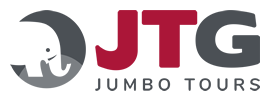Those who have worked in the professional tourism sector for more than a decade have witnessed how new technologies have completely changed the situation. Now, most of the tourist population is formed by more informed travellers, who want personalised experiences, who use information and communication technologies to find what they want and expect immediate attention from suppliers. At the same time, the number of digital tourists who fall into this profile is ever increasing, as pricing has become more flexible and a greater percentage of the population has access to tourism around the world.
It is technology which has made this new scenario possible where trends have marked a very different path than from those of previous decades. And at the centre of everything is the client, with many more resources to hand, so that industry professionals strive to update themselves and offer quality in the marketplace with these 5 keys:
– A hyperconnected client, with access to all kinds of information. How much time it will take, the most popular routes, language translation applications, traffic information, walking directions from the hotel to the museum… Via their mobiles, the digital tourist has immediate access to all the practical information they need to get the most out of their trip. And they can also make purchases or reservations without going to the actual point of sale.
– Information from other travellers. Checking if a hotel is well located, has good services, if the customer service is also good, reading reviews from other customers through platforms such as Trip Advisor and similar. As such, tourism and other related companies must strive to offer comprehensive and quality services.
– Personalized experiences. Tailor-made travel is no longer an exception. Now, tourists want a holiday in which they decide what activities they will take part in, what places they will explore, if they want to do it in the company of others or alone. Now it is the tourist companies which must adapt to the customer and not the other way around.
– The role of social media. The experience of travellers is in many cases reflected in their social networks, which have also become a good promotional platform for tourism professionals if they offer good services and can satisfy their customers. On the other hand, every tourism company now has its own social networks through which it not only promotes its services but also handles queries, requests or complaints of its customers. Interactivity is crucial, among other reasons because the customer can be converted into a PRESCRIBER who recommends the services they have used.
– Individualized marketing. Tourism marketing has undergone a significant change thanks to Big Data, as it allows services to be customized according to the user’s profile. The customer is now at the centre of the advertising strategy. The destinations and services offered are still important but are now specifically tailored to the target audience.





